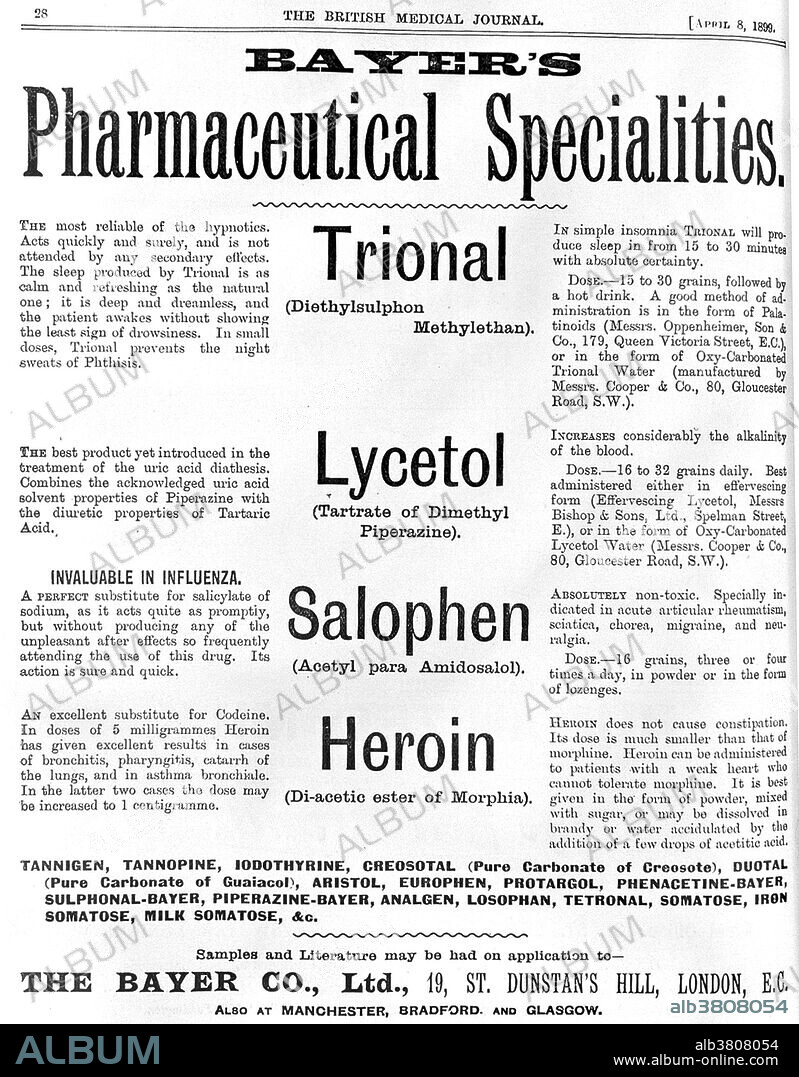alb3808054
Ad for Bayer's Drugs, Including Heroin, 1899

|
Zu einem anderen Lightbox hinzufügen |
|
Zu einem anderen Lightbox hinzufügen |



Haben Sie bereits ein Konto? Anmelden
Sie haben kein Konto? Registrieren
Dieses Bild kaufen.
Nutzung auswählen:

Titel:
Ad for Bayer's Drugs, Including Heroin, 1899
Untertitel:
Siehe automatische Übersetzung
Advertisement for Bayer Company's drugs, including Trional, Lycetol, Salophen and Heroin. From British Medical Journal, published April 8th, 1899. Diacetylmorphine (heroin) was first synthesized in 1874 by C. R. Alder Wright, an English chemist, but his invention did not lead to any further developments, and diacetylmorphine became popular only after it was independently re-synthesized 23 years later by another chemist, Felix Hoffmann. Hoffmann, working at Bayer in Elberfeld, Germany, was instructed by his supervisor Heinrich Dreser to acetylate morphine with the objective of producing codeine, a constituent of the opium poppy, pharmacologically similar to morphine but less potent and less addictive. Instead, the experiment produced an acetylated form of morphine one and a half to two times more potent than morphine itself. The head of Bayer's research department reputedly coined the drug's new name, "heroin," based on the German heroisch, which means "heroic, strong.' From 1898 through to 1910, diacetylmorphine was marketed under the trademark name Heroin as a non-addictive morphine substitute and cough suppressant.
Bildnachweis:
Album / Science Source / Wellcome Images
Freigaben (Releases):
Model: Nein - Eigentum: Nein
Rechtefragen?
Rechtefragen?
Bildgröße:
2700 x 3461 px | 26.7 MB
Druckgröße:
22.9 x 29.3 cm | 9.0 x 11.5 in (300 dpi)
 Pinterest
Pinterest Twitter
Twitter Facebook
Facebook Link kopieren
Link kopieren Email
Email
